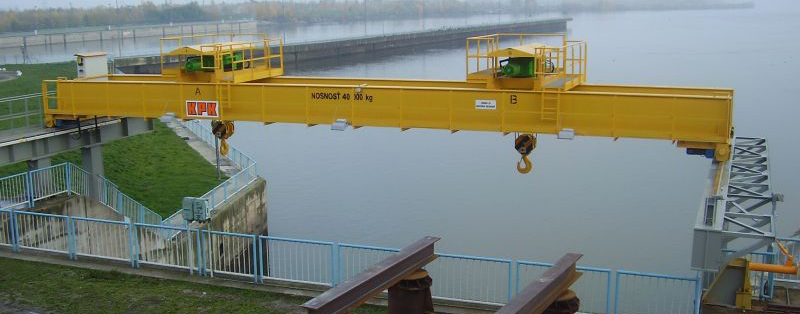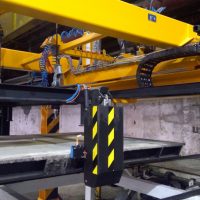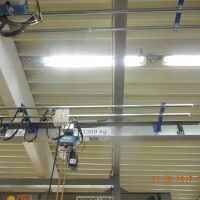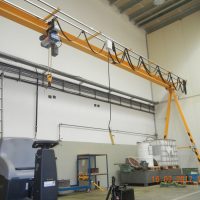
Monorail crane by KPK company
CARRYING STRUCTURE
The hoist carrying structure is created by a beam made of rolled "I" profile, in case of bigger load reinforced by means of two "L" profiles on the sides, or of rolled profiles "HEA", "HEB" and "IPE". The beam can be fixed to the building structure in different ways, or it is possible to built an individual structure anchored into the floor.
HOIST
Lifting of the load is performed by electric chain hoist. The up to date design of hoists ensures a safe and economic operation. The high service life is achieved thanks to the use of gears made of high quality steel. According to the requirements it is possible to deliver the hoisting equipment with different types of hoists (rope hoist, chain hoist). Different lifting speeds, with and without the creep speed, with two-speed or one-speed electric travel, are available. The lifting heights are usually from 3 to 12 m; the bigger heights are also possible. The hoisting equipment can be equipped also with manual chain hoist. The operating power by manual hoist does not exceed 300 N.
ELECTRIC INSTALLATION
The hoisting equipment can be delivered with complete electrical installation, the distributors contain the up to date electrical elements, enabling different movement speeds and the control by means of frequency converters.
CONTROL
The travelling hoist can be controlled by means of pending controller up to the maximum hoist speed of 48 m.min-1.
RECOMMENDED USE
Technological hoist, designated for light and medium heavy operation. It is suitable for transporting loads between machine tools and especially there where the trajectory of transported load is exactly specified. (The use in another environment, or in heavy operation must be consulted with manufacturer).
ELECTRIC ENERGY SUPPLY
Electrical voltage is supplied to the hoist by means of gathering cable line, created by galvanized "C" profile, by carts and flat cable. With longer hoist runways it is convenient to use the covered plastic trolley.
Example of versions monorail cranes
- Automatic doublerail crane
- Monorail crane 1,3t
- Monorail crane 1t



